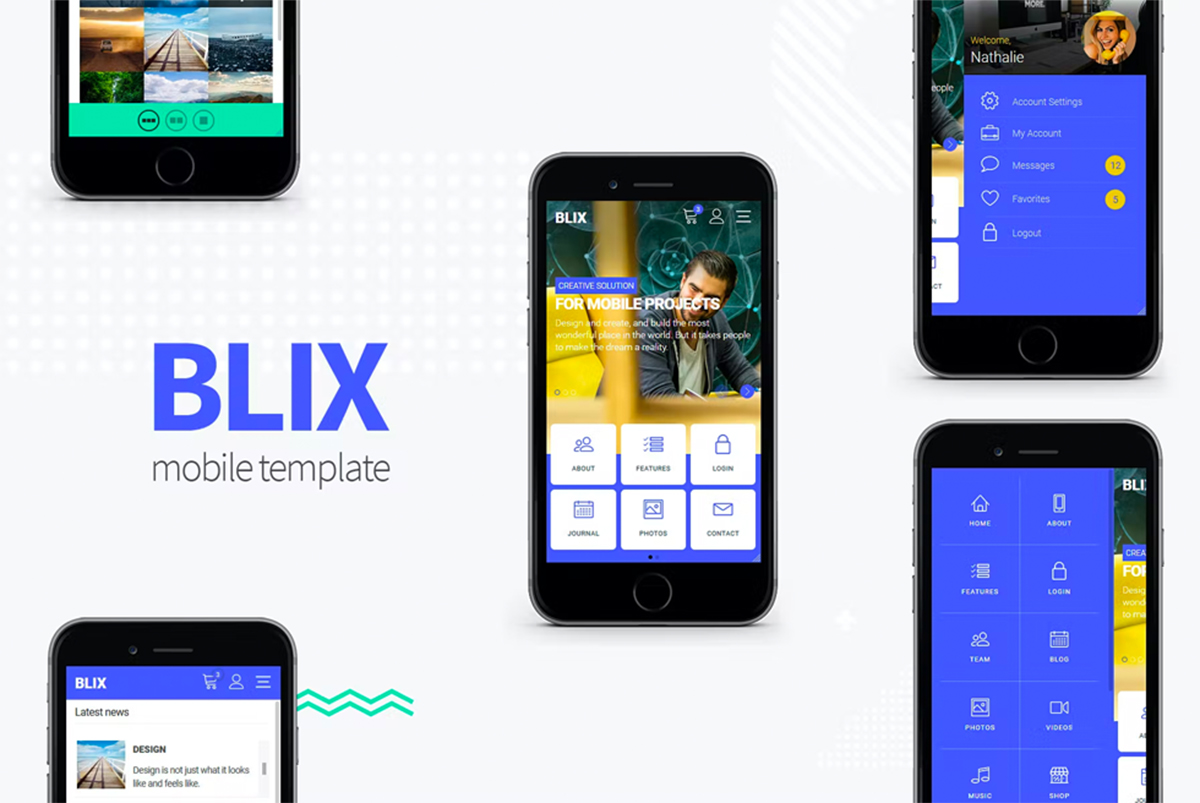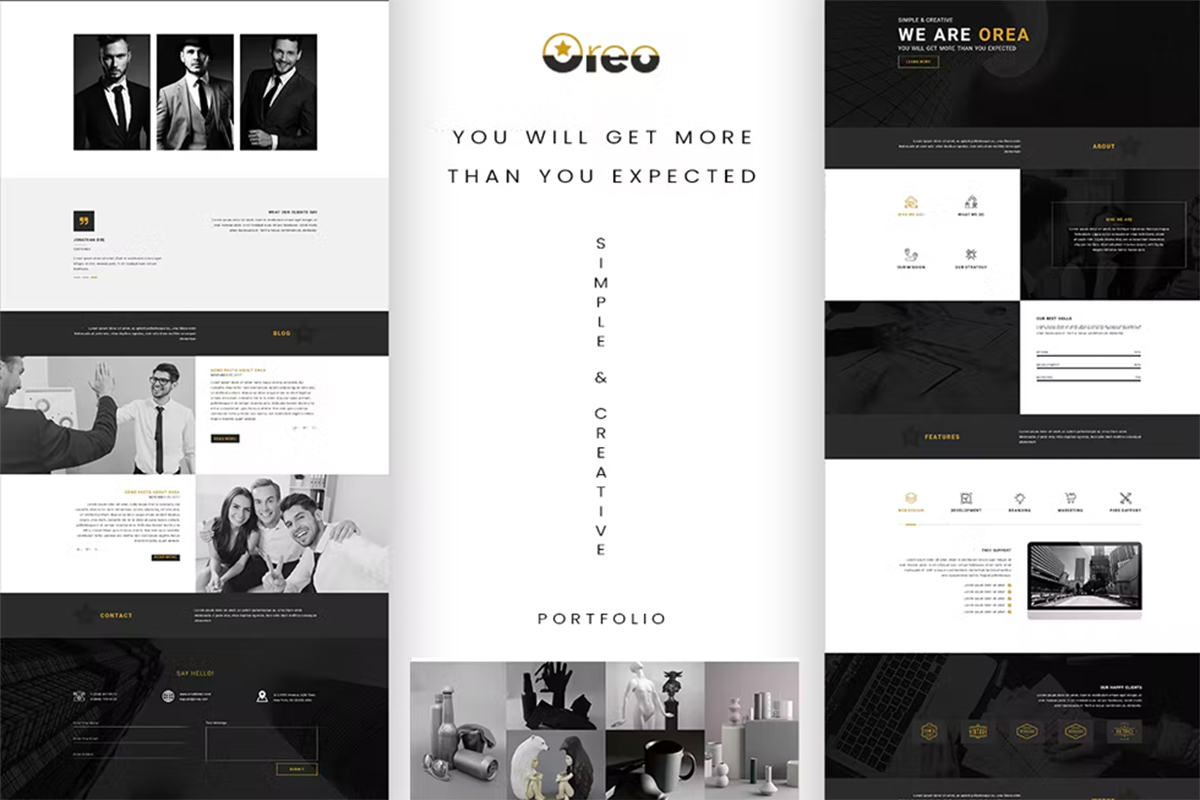How Often Do You Need to Redesign Your Website? (7 Ways to Know It Is Time)
Does it seem like as soon as you finally get your website design right, it’s time for a change?
You are not alone. With the speed at which technology – and design trends – are changing, that’s a common feeling. But how often do you really need a redesign? When do you know that it is time?
It’s a balancing act. You don’t want to waste resources on an unnecessary redesign, but equally you don’t want to fall behind and risk a dated online presence.
Let’s walk through the answers to those questions with some website template examples from Envato Elements to help jumpstart your design thinking.
How Often Do You Need to Redesign Your Website?

Generally, it is time to start thinking about a website redesign every two to three years. Sometimes this is a full-scale, scrap the entire design, and start over process, but it might also be a series of tweaks to freshen up the overall aesthetic.
Some sites can wait about five years between designs, but a lot of it depends on your traffic and user expectations. How trendy is your brand? What do users expect from you? Is your current site using out-of-date technology or techniques that make it look dated?
Many big brands will actually start thinking about the next iteration of a website almost immediately after launching a new design.
While that might sound like a terrifying concept, having a solid plan for planned redesigns (including a budget for it) can actually make the idea a lot less intimidating.
When Is It Time to Redesign Your Website

If you aren’t sure that it is time to start thinking about a new website, there are a few signs that it is time for a redesign. While some of them are quite obvious, there are some other sneaky signs that you definitely should not ignore.
1. Your Website is Slow or Doesn’t Render Well on Newer Devices
A sure sign of an out-of-date website is that it doesn’t work on the newest phones and devices. Technology is changing fast and the size, speed, and other device features are important for your website usability.
Your audience is probably accessing the website at least half of the time on a phone or mobile device and your website must work flawlessly there. If not, you are in desperate need of a redesign.
2. Your Bounce Rate is High (And Increasing)

A high bounce rate, or one that is continually increasing, is a more sneaky sign that it is time for a redesign. The bounce rate tells you how frequently users are coming to the website and immediately leaving.
If your bounce rate is increasing, it is often a sign that something isn’t working.
- Is the design unclear?
- Is it not functioning properly?
- Are users being directed to the wrong content?
3. Content Is No Longer Relevant
Speaking of content, that’s a major consideration for every website design – and redesign. If you haven’t done an audit of content or a refresh of content lately, that can be a huge driver in the process.
Most website owners update content fairly regularly.
Here’s the other thing that can impact your content and design: How people enjoy reading online is continually changing.
Depending on your target audience, long-form content may be out with a renewed focus on short-form content. You might find that users engage longer and more frequently with video content versus photos.
Technology changes and better access to high-speed internet for more people are a driver here for sure. It’s important to think about these changes and how they might impact your design moving forward.
4. The Design Doesn’t Do Anything to Create Conversions

What is your website supposed to do? And is it doing it?
If the design isn’t driving conversions, your website probably needs work. It starts with your goals. What do you want people to do on the website? Then you need to track if they are actually doing it.
Conversions don’t have to be complicated; they can range from watching a video to filling out a form. From signing up for an email to buying a product. The commonality is that your website design should help users do something while they are interacting with the website.
5. It Lacks Keywords and On-Page SEO Value
Even if your design is beautiful, it’s not working for you if it lacks relevant keywording and on-page search engine optimization.
Unless you are running a ton of ads (and even if you are), search engine traffic can be a solid source of visitors to the website.
If you aren’t properly using keywords and SEO, you are missing out on a lot of opportunities to make your website work for you, and it is time to think about the technical aspects of the design to facilitate this change, even if you like the overall appearance.
6. Your Business Has Grown, But the Website Has Not

If your business has experienced a period of rapid growth, you probably need to step back long enough to help your website catch up. Business growth often outpaces the content and design of a website because you are so busy.
But here’s the challenge – that website you created before your business started expanding might not be accurate or represent your business the way you want to be seen anymore.
It’s important to grow the website design with you the business changes, from what you do to the way you represent yourself to branding updates.
7. The Design Was Trendy Three Years Ago (And Isn’t Anymore)
This is the most obvious reason on the list to redesign your website (but is still often overlooked). If you built the website using a super trendy design scheme that has fallen out of fashion, it is time for a redesign.
Users will notice the old design, and it immediately causes credibility issues in terms of the design and your content. If the site looks old, is the information old, too?
Conclusion
Getting on a redesign schedule can help you plan (and budget) for website redesigns. Your website is a gateway to customers you haven’t ever interacted with, loyal fans, and people looking to learn about your business. You want to make a good impression.
The typical framework for a website redesign is two to three years with some companies pushing to a five-year cycle. Changes in user behavior, technology, and design trends are major factors that impact how frequently you need to think about redesigning your website.